Things can end really badly if you don’t follow the guidelines at Yellowstone. This video shows two things: both how aggressive bison can be when they feel threatened and how calm they can be when you act calmly. If you’re not careful, you might end up like this group of tourists who get charged by a herd of bison.
A Startling Encounter at Yellowstone
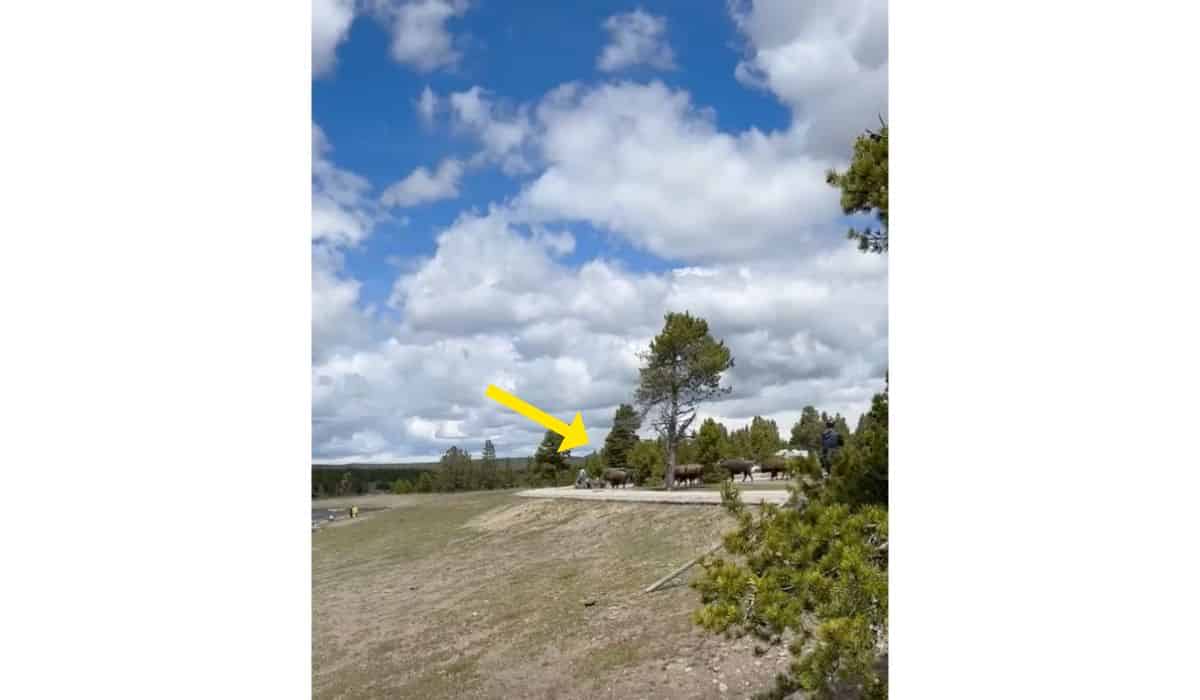
A recent video from Yellowstone National Park, taken by Adella Gonzalez, shows tourists getting too close to a group of bison. The tourists learned the hard way how fast these wild animals can move. Gonzalez captured the moment on camera as the bison began to charge.
Tourists and Bison: A Risky Mix

Gonzalez, on vacation with her family, noticed a group of bison near a walkway. At first, they seem strangely calm – they surround a man who’s sitting on a bench by a picnic spot. But as the man doesn’t move, the bison pay him no mind, despite being no more than a few feet from them.
Bison Starts Charging At Another Group of Toursist Who Weren’t Careful

However, some other tourist don’t act as calm as the man on the bench, and they pay the price. They can be seen going towards the bison herd, disregarding safety, getting too close to the herd. Gonzalez filmed the scene as the bison, feeling threatened, started to run towards the group, causing a sudden panic.
Bison Charges At Tourists
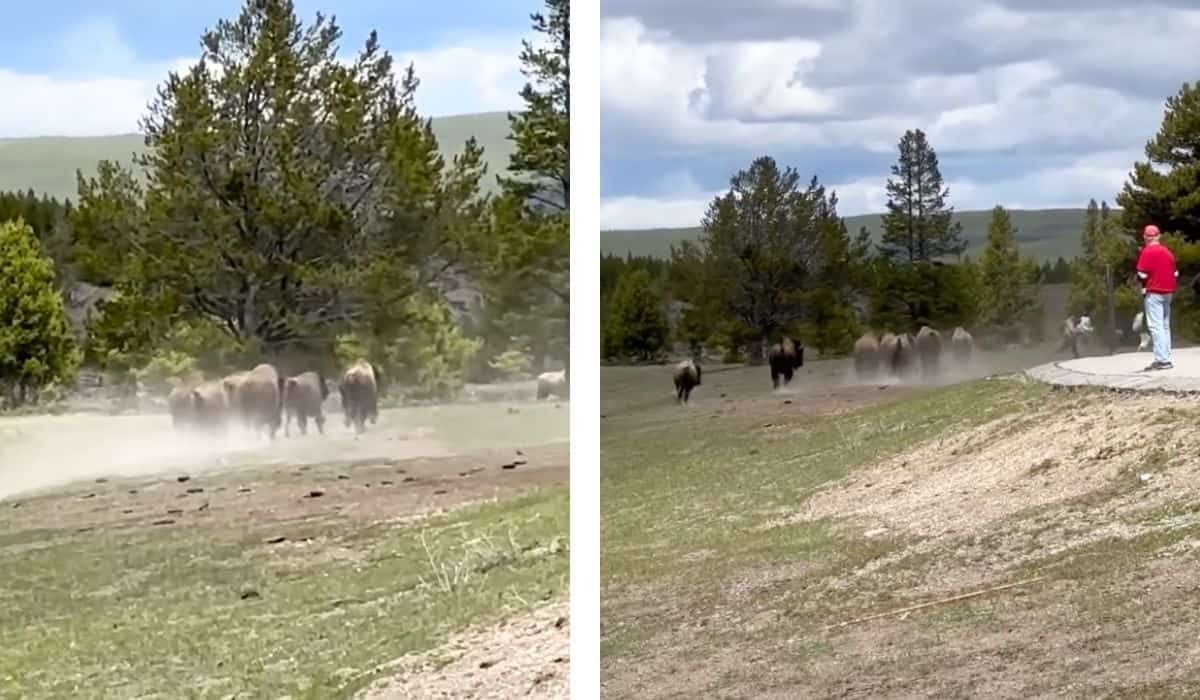
In the video, the bison can be seen ambling across a pathway before they begin to charge. A woman’s voice can be heard, “I don’t think that’s wise.” The bison, agitated by the close approach, suddenly started running towards the group.
The Importance of Keeping Your Distance

Wildlife experts always advise maintaining a safe distance from wild animals. Approaching them can cause stress and unpredictable behavior. This event is a stark reminder to respect wildlife boundaries and observe from afar.
How Fast Can Bison Run?
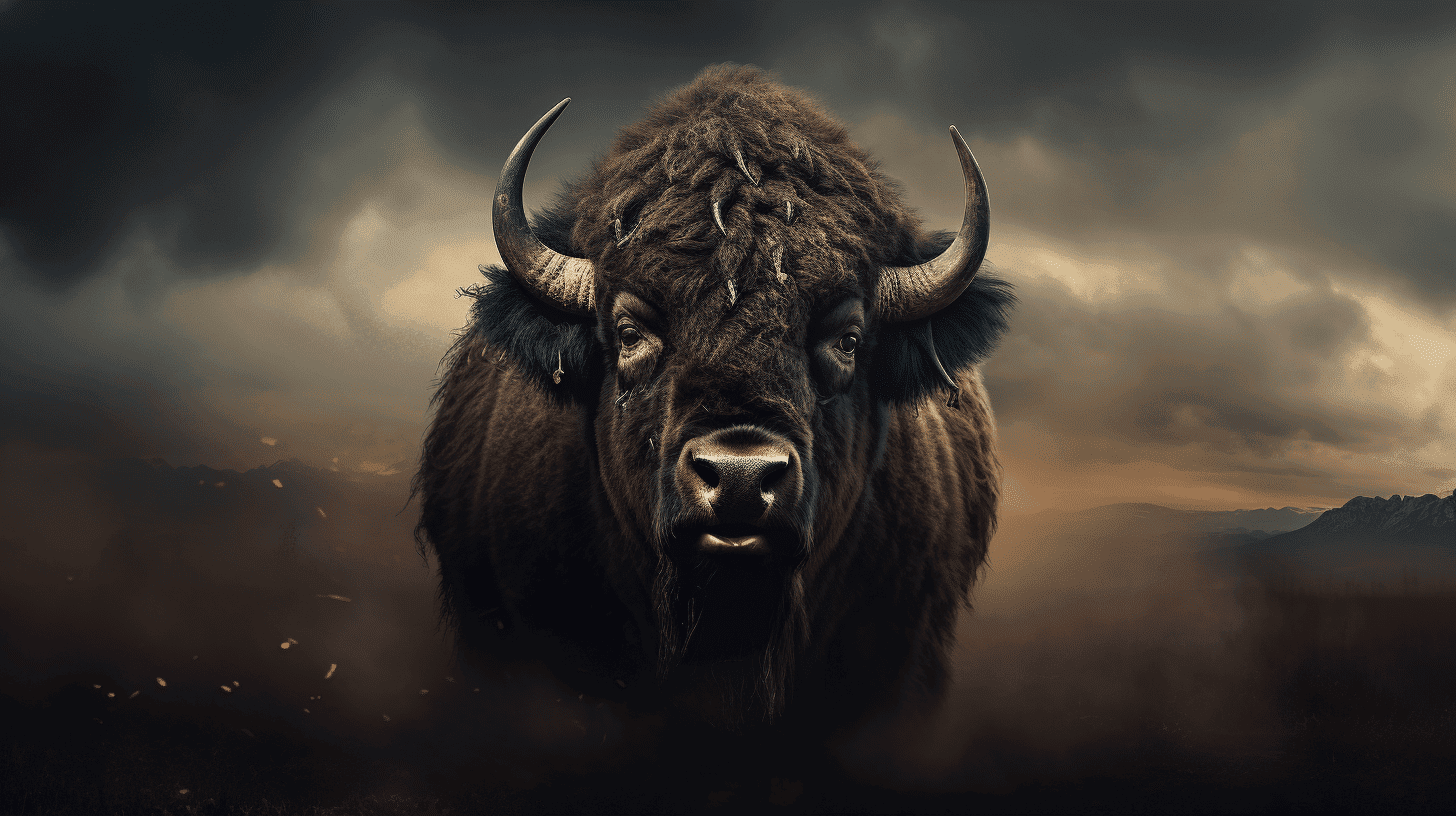
Bison can run at speeds up to 35 miles per hour. Despite their large size, they are incredibly agile and can quickly cover ground when they feel threatened. This speed allows them to evade predators and, as seen in recent events, can be surprising and dangerous for unwary tourists.
Are Bison the Most Dangerous Animals at Yellowstone?

While bison are responsible for more injuries than any other animal at Yellowstone, they aren’t necessarily the most dangerous. Their size and unpredictable nature make them a significant risk, but other animals like bears and wolves also pose serious threats to visitors who don’t follow safety guidelines.
What Is the Heaviest Bison Ever Recorded?
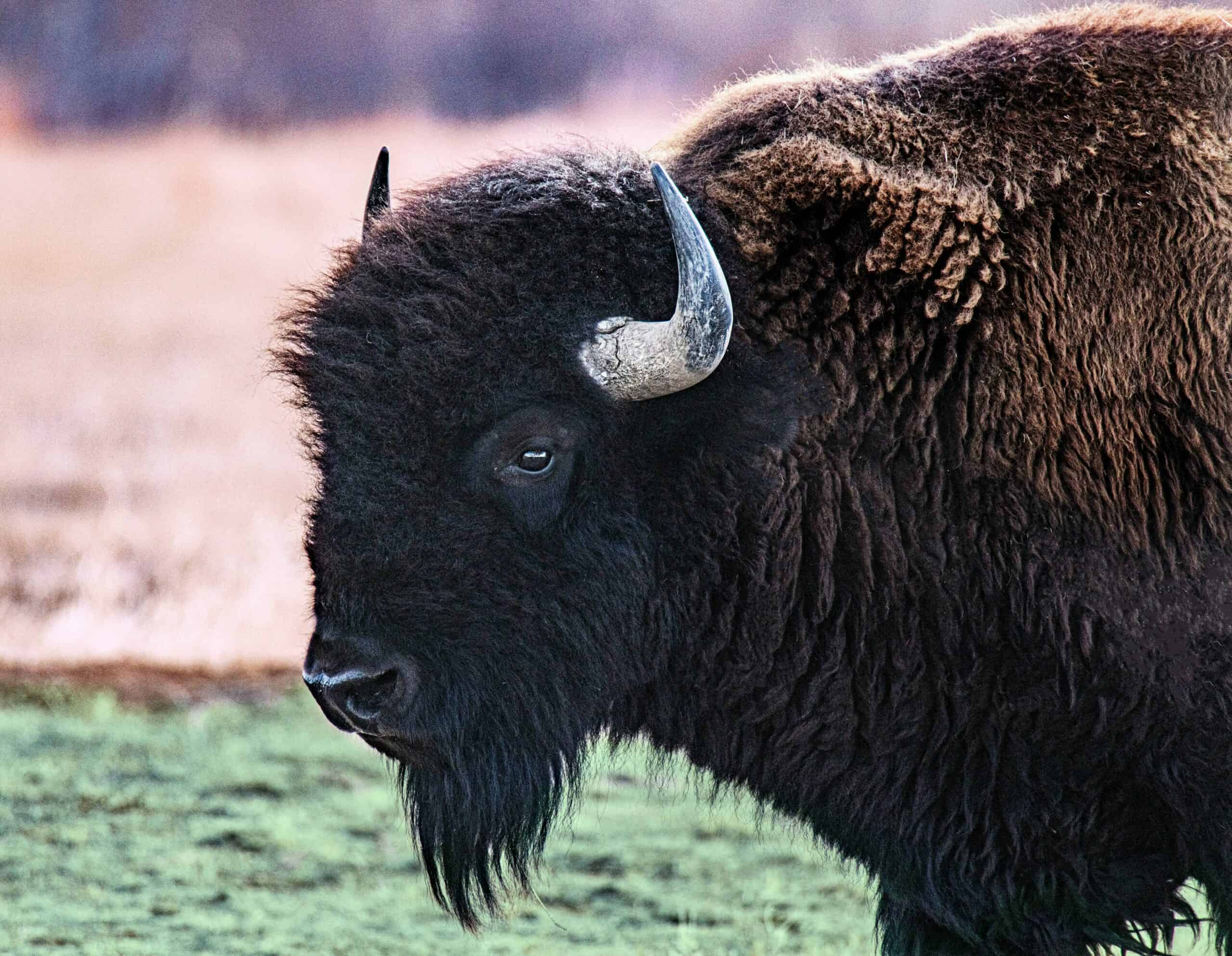
The heaviest bison ever recorded weighed around 2,800 pounds. These massive animals are the largest terrestrial mammals in North America. Bulls are typically larger than cows, and their immense size contributes to their ability to dominate their habitats and fend off predators.
How Many Bison Attacks Occur in Yellowstone Every Year?

On average, there are one or two reported bison attacks in Yellowstone each year. These incidents usually involve tourists who get too close to the animals, ignoring safety regulations. The park emphasizes the importance of maintaining a safe distance to prevent these potentially dangerous encounters.
Understanding Bison Behavior

Bison are generally calm but can become aggressive if they feel threatened. They are fast and powerful, capable of running up to 35 mph. Knowing their behavior and respecting their space is crucial for safety in national parks.
Safety Tips for National Park Visitors

Visitors to national parks should always follow safety guidelines. This includes keeping a safe distance from wildlife, staying on designated paths, and avoiding sudden movements or loud noises that can startle animals.
The Role of Park Rangers

Park rangers play a vital role in ensuring the safety of both visitors and wildlife. They provide information, enforce rules, and help manage interactions between humans and animals to prevent dangerous encounters.
Why Bison Are Important to Ecosystems

Bison are keystone species in their ecosystems. They help maintain the health of the plains by grazing on grasses, which promotes plant diversity. Their movements also help aerate the soil, benefiting plant growth.
Respecting Wildlife Habitats

Respecting wildlife habitats is essential for conservation. Human activities can disrupt animal behaviors and habitats, leading to negative impacts on ecosystems. Observing wildlife from a distance helps minimize these disruptions.
The Consequences of Feeding Wildlife

Feeding wildlife can be harmful. It alters their natural foraging behaviors, makes them dependent on humans, and can lead to aggressive behavior. It’s crucial to avoid feeding animals and follow park regulations.
The Role of National Parks in Conservation

National parks play a key role in protecting wildlife and preserving natural habitats. They provide a sanctuary for animals, support conservation efforts, and offer educational opportunities for visitors to learn about nature.
How to React During Wildlife Encounters
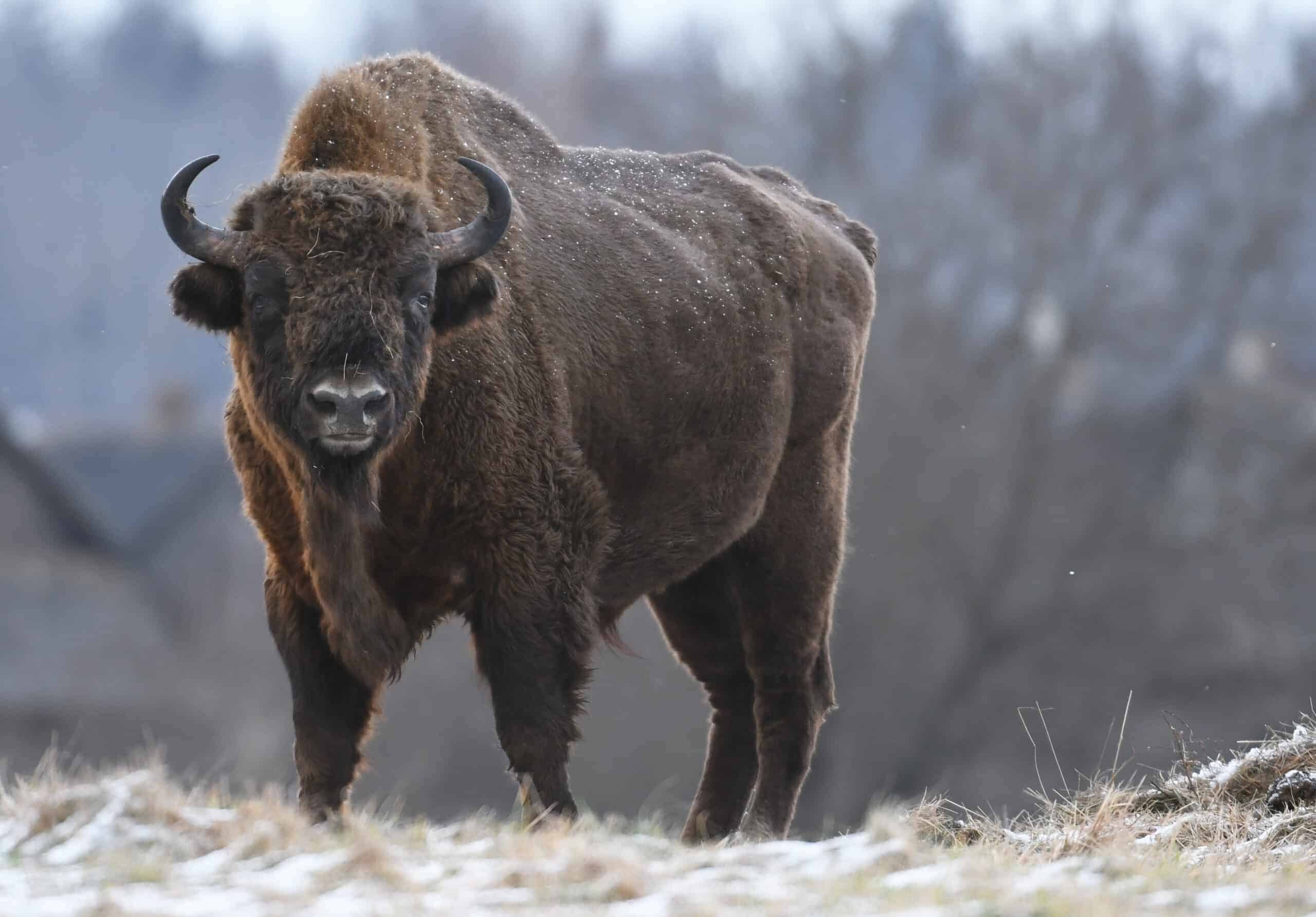
Knowing how to react during wildlife encounters can save lives. Stay calm, back away slowly, and avoid direct eye contact. Running can trigger a chase response in some animals. Always follow park guidelines for safety.
The Impact of Tourism on Wildlife

Tourism can have both positive and negative impacts on wildlife. While it raises awareness and funds for conservation, it can also lead to habitat disturbance and stress for animals. Responsible tourism practices are essential.
The History of Bison in North America

Bison have a long history in North America, once roaming the continent in vast numbers. They were nearly driven to extinction in the 19th century but have made a comeback thanks to conservation efforts.
The Symbolism of Bison

Bison hold cultural significance for many Native American tribes, symbolizing strength, resilience, and the connection to the land. They play an important role in the cultural heritage of these communities.
Bison Charges at Tourists: Conclusion
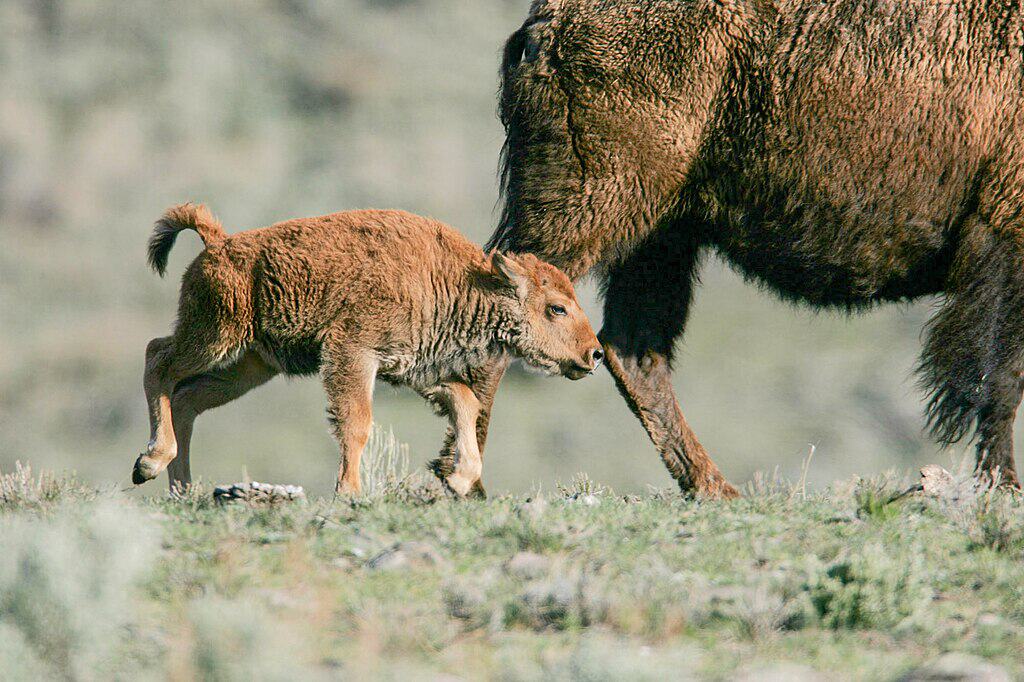
While there are many videos out there illustrating why you should definitely not approach bison, this one highlights how sudden movements and running can trigger them to charge toward you. And remember, a charge can be deadly. At the same time, the video shows how they’re not inherently aggressive animals – they left the man calm mind minding his own business completely alone.
Thank you for reading this article about the herd of bison that charges at a group of tourists! For more bison events, take a look here:
- Officials Welcome First Wild Bison in 10,000 Years After Major Restoration Initiative
- Massive Bison Stampede in Yellowstone National Park Holds Up Traffic and Causes Panic
- Montana Reporter has Hilarious Reaction To Approaching Massive Bison Herd in Yellowstone – He Fled..
Join our Forum for free today!

- Herd of Bison Calmy Walk By Man But Then Charges At Another Group of (Reckless) Tourists at Yellowstone - July 2, 2024
- Rescue Dog Becomes the Rescuer and Saves Family From Intruder Armed with Knife in New Mexico - July 2, 2024
- 14-Year-Old Boy Swimming in North Carolina Survives Shark Attack Thanks To Quick Medical Response - July 2, 2024

